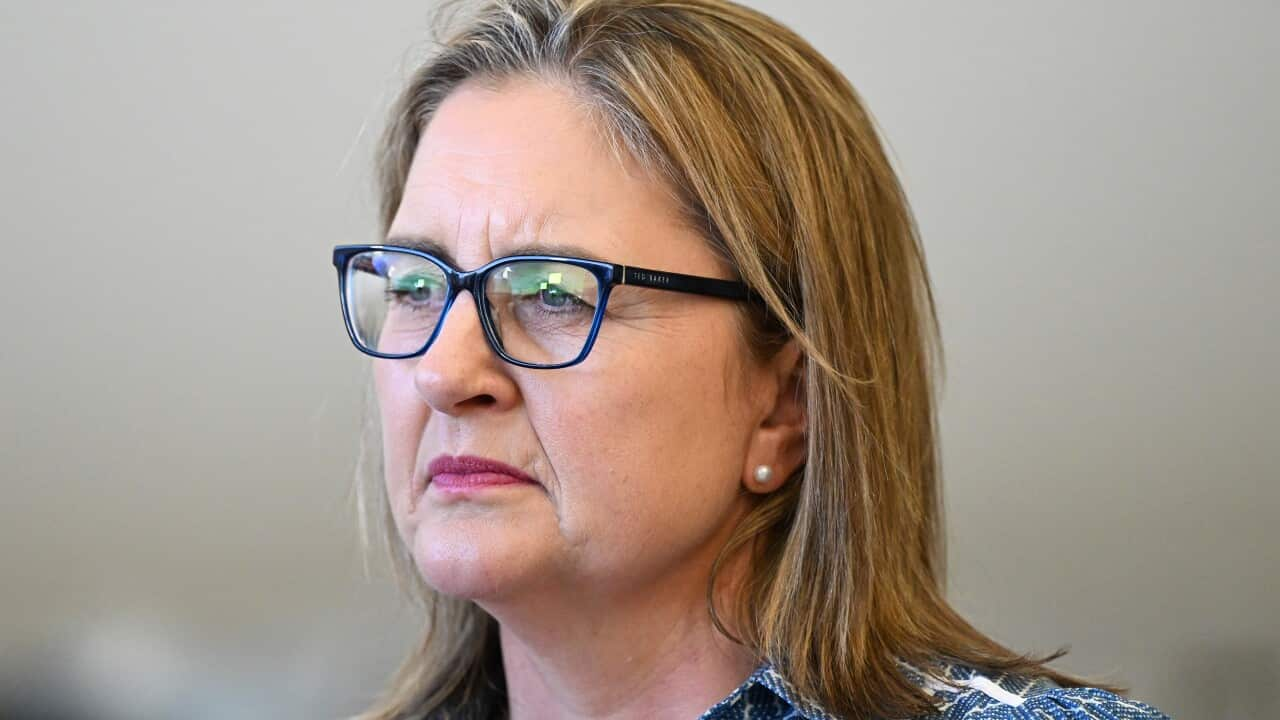Competing claims emerged after more than 100 people were killed in a scramble for aid in Gaza.
The Gazan health ministry says Israeli forces shot them, but the army insists they died in a stampede.
Here's what we know so far.
Did Israeli troops open fire?
A witness in Gaza City told the AFP news agency that Thursday's violence unfolded when thousands of people desperate for food rushed towards aid trucks at the city's western Nabulsi roundabout.
"Trucks full of aid came too close to some army tanks that were in the area and the crowd, thousands of people, just stormed the trucks," the witness said.
"The soldiers fired at the crowd as people came too close to the tanks."
Gaza's health ministry said 112 people were killed and 760 were wounded.
Hossam Abu Safiya, director of Gaza City's Kamal Adwan Hospital, said all the casualties were hit by "bullets and shrapnel from occupation forces".
An Israeli military official said there was an initial stampede, involving "thousands of people" in which "dozens of Gazans were injured and killed, some of them run over by the trucks".
Part of the convoy had then managed to continue on its way.
"Soldiers fired warning shots in the air and then fired towards those that posed a threat and did not move away," the soldier said.
"I can say we had a limited response, limited fire... It was not a massive event from our perspective."
The IDF spokesperson acknowledged that an unknown number of people had been killed by the "limited response", Reuters reported.
How much aid does Gaza need?
For months, aid workers have warned of an increasingly desperate situation for Gazan civilians, and on Monday an official from the UN humanitarian office OCHA said widespread starvation was "almost inevitable".
UN estimates show that 2.2 million people - the vast majority of the Gaza Strip's population - are threatened with famine, particularly in northern areas around Gaza City.
According to the UN agency for Palestinian refugees, , just over 2,300 aid trucks entered the Gaza Strip in February, a drop of about 50 per cent compared with January.
That is an average of well below 100 trucks per day, down from around 500 that were entering daily before the war.
US State Department spokesman Matthew Miller said the rush for aid showed the situation was "incredibly desperate" and called on Israel to "enable safe and secure distribution of that aid throughout Gaza."
On 20 February, the World Food Programme announced that despite widespread hunger, it was again suspending aid deliveries to northern Gaza after two convoys were mobbed and looted by desperate civilians.
The two convoys were its first in more than three weeks.
Who organised the aid convoy?
Israeli military spokesman Daniel Hagari said the convoy of 38 trucks ferrying aid from Egypt had "entered Gaza for distribution by private contractors".
He said aircraft as well as tanks had been deployed to secure the convoy route but that there had been no air strike or tank fire towards the aid convoy.
Rear Admiral Hagari said troops had conducted similar convoy protection operations "the last four nights without any problem".
Most Gaza aid convoys are organised by UN agencies, but in a post on X, chief Philippe Lazzarini said: "Neither UNRWA nor any other UN agency were involved in this distribution."
Will the deaths affect truce talks?
United States President Joe Biden said a ceasefire in war-torn Gaza was now unlikely to happen by Monday, adding that the shooting incident complicated negotiations.
a deal was possible by Monday to implement a temporary ceasefire between Israel and Hamas in exchange for the release of some hostages held in Gaza.
"Hope springs eternal," he told reporters when asked about the ceasefire timing, as he left the White House for a pre-election trip to Texas to visit the US-Mexico border.
"I was on the telephone with people in the region ... Probably not by Monday, but I'm hopeful."
Asked if he was worried whether it would complicate the delicate negotiations for a ceasefire, he replied: "I know it will."
The White House later said Biden had spoken with two key regional players on Thursday — Qatar's emir Sheikh Tamim bin Hamad Al-Thani and Egyptian President Abdel Fattah al-Sisi — about efforts to reach a ceasefire.
The leaders also discussed the "tragic and alarming incident" in Gaza involving aid, saying it "underscored the urgency of bringing negotiations to a close as soon as possible", the White House said.
More than 30,000 people have been killed since Israel's bombardment of Gaza began last October.
The US has backed Israel since Hamas' October 7 attack where militants killed around 1,160 people and took about 250 hostages.
However, the US has recently pushed for a ceasefire and a reduction in civilian casualties by Israel.
- With additional reporting from Reuters.



